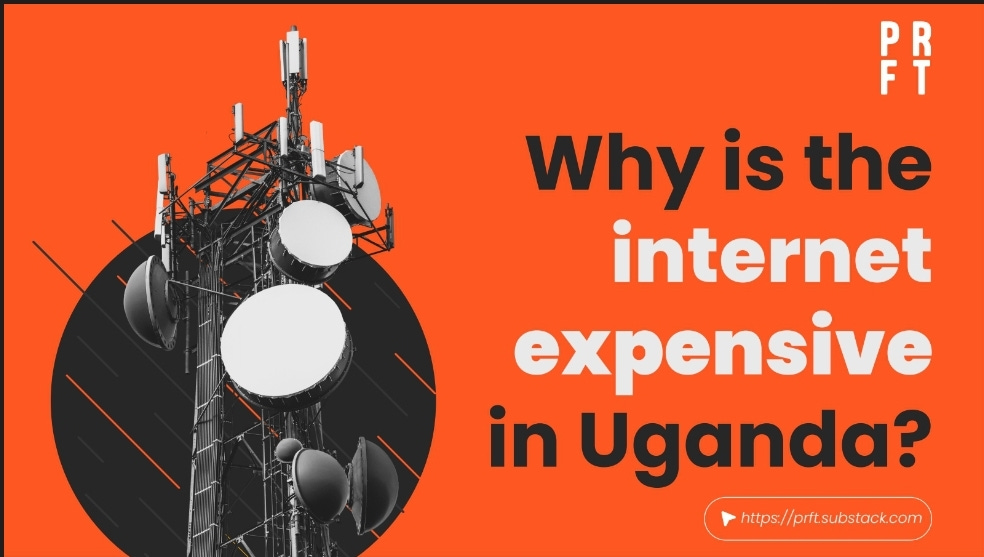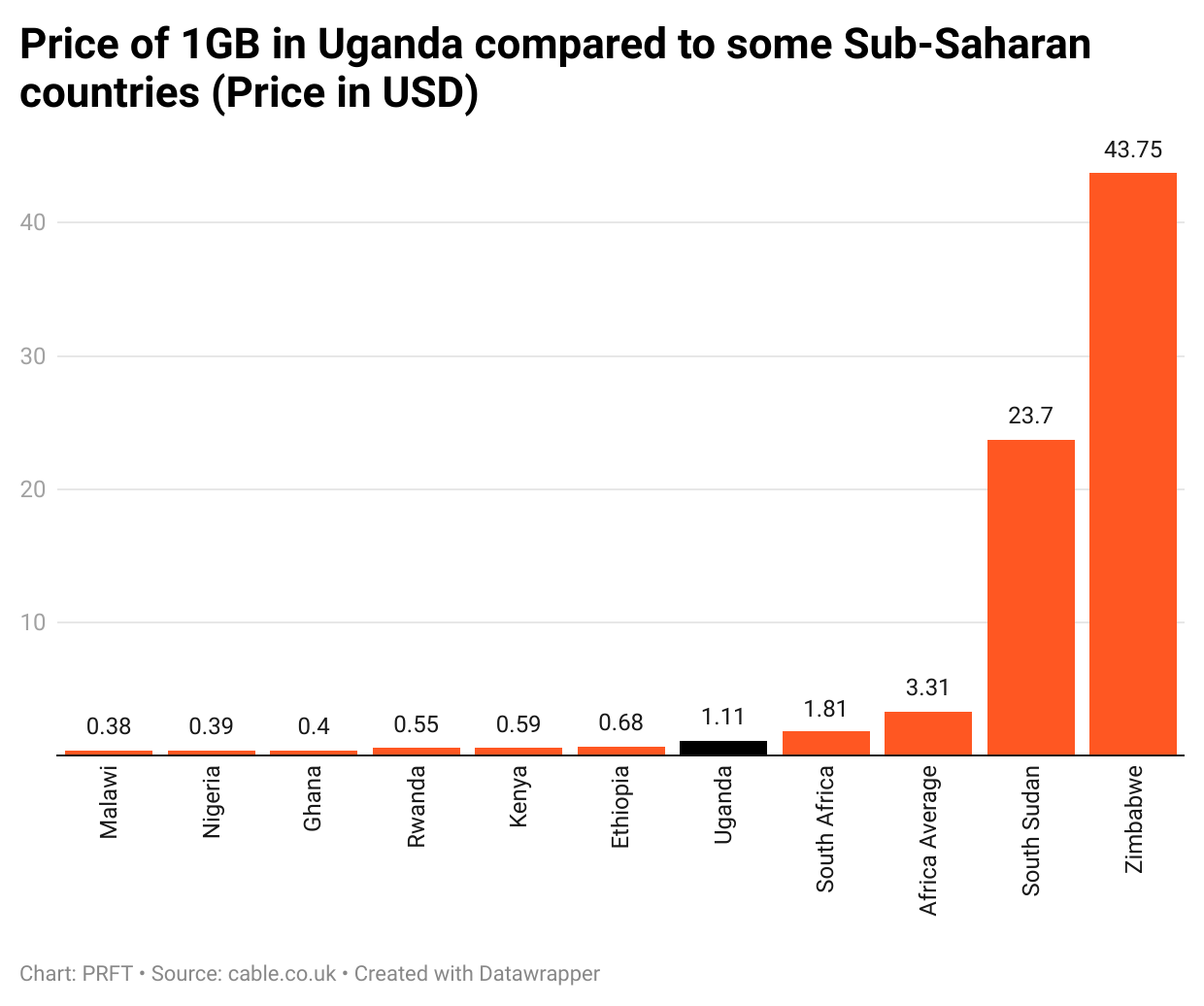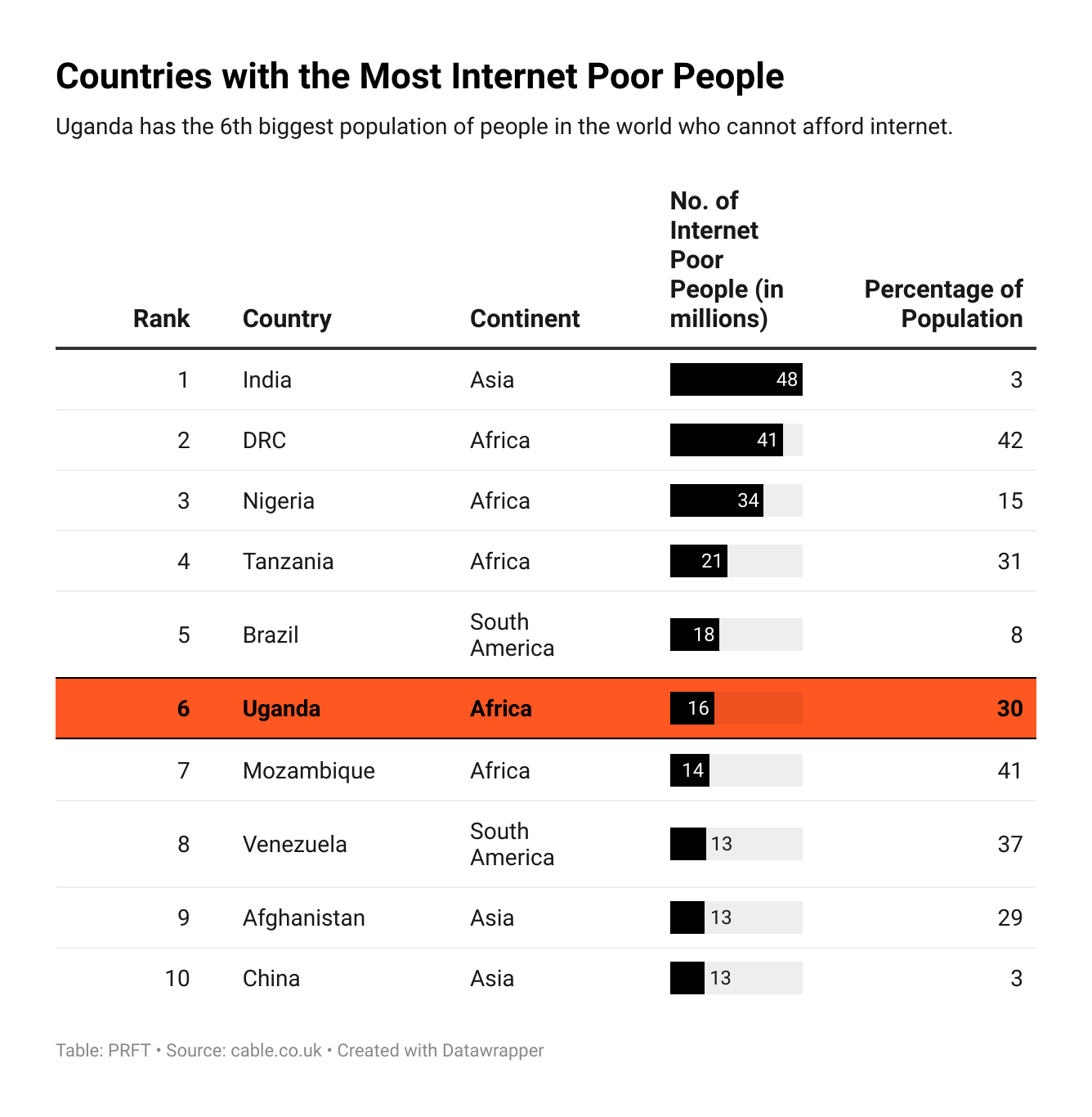Why Is the Internet Expensive in Uganda?
Access to affordable and fast internet is increasingly becoming a basic need, on par with other needs like food, shelter, education and medical help.
Access to affordable and fast internet is increasingly becoming a basic need, on par with other needs like food, shelter, education and medical help. Thanks to internet access, the world can stay entertained, educated, and, most importantly, connected.
For businesses, an affordable internet isn’t just a convenience; it’s a lifeline. From managing operations and communicating with clients to marketing products online and accessing cloud services, reliable connectivity underpins almost every aspect of modern business.
High internet costs can limit a company’s ability to adopt digital tools, slow down decision-making, and reduce competitiveness, especially for small and medium enterprises.
Making the internet more affordable helps businesses streamline operations, reach new customers, and ultimately grow, which benefits not just individual companies but the broader economy.
The African Declaration on Internet Rights and Freedom, a Pan-African initiative to promote human rights standards and principles of openness in Internet policy formulation and implementation on the African continent, breaks down the vitality of the Internet even further.
It argues that access to the Internet plays a vital role in the full realisation of human development and facilitates the exercise and enjoyment of several human rights and freedoms, including the right to freedom of expression and information, the right to education, the right to assembly and association, the right to full participation in social, cultural and political life and the right to social and economic development.
Uganda, just like so many other African countries, has a lot of room to improve when it comes to internet affordability. When purchasing an internet bundle from MTN, customers can choose between two options: 2GB of data for 5,000 UGX, valid for three days, or 3.5GB of data for 10,000 UGX, valid for one week.
MTN’s major competitor, Airtel, also charges at similar rates. There has also been an influx of other fibre providers like CanalBox, Zuku, Savannah, etc, that provide monthly unlimited bundles at around UGX 100,000 - 150,000 for speeds of 20mbps.
However, to understand how expensive internet costs in Uganda are and for a more comprehensive comparison, let's consider the 2023 data from Cable.co.uk, which provides insights into global internet pricing trends. This will help contextualise offerings within the broader market.
As per 2023 data from Cable.co.uk, 1GB of data in Uganda costs just over 4,000 UGX or $1.11. However, the cheapest 1GB bundle can cost as low as $0.02, whereas the highest can cost up to $16.7.
This means that Uganda has the 18th cheapest 1GB bundle in Sub-Saharan Africa out of 50 countries, and our price is less than the regional average of $3.31.
In theory, the cost may not sound like a lot. And in fairness, Uganda is performing better than most African countries. However, the picture starts to look grim when you consider how much of our monthly income goes to internet costs. Ugandans spend 8% of their average monthly income on the Internet, which is more than the African average of 7%.
This has led to Uganda becoming one of the countries in the world with the most internet-poor people.
The Internet Poverty Index, run by the World Data Labs, an analytical NGO that creates actionable data to track consumer trends and progress toward global sustainability goals, defines internet poverty as the inability of individuals to afford a basic mobile internet package, defined by three pillars: affordability, quantity, and quality.
Affordability is set at a maximum of 10% of total spending, with a minimum data requirement of 1GB per month and a quality standard of 10 Mbps download speed.
The Internet Poverty Index methodology involves training a hedonic pricing model to estimate the cost of 1GB of mobile internet based on quality and socioeconomic factors, determining how many people can afford this package globally.
Globally, there are 923 million people who are internet-poor. 30% of these (274 million) live in Africa. Asia is second with 125 million people, while South America has 55 million internet-poor people. Oceania (4.5m), Europe (2.4m) and North America (2m) follow suit.
In Uganda, only 30% of the population can afford the internet. This means that 16 million Ugandans are internet-poor, and this is the sixth highest figure in the world, sandwiched between Brazil (18 million) and Mozambique (14 million).
To understand why internet costs in Uganda, and for the large part, many African countries, are high, we will need to understand the underlying factors that determine the cost of internet. And to do this, we will have to know how the internet gets to our devices in the first place.
“There are many factors that affect the pricing of the internet,” Kyle Spencer tells PRFT. “One of them is the location of content that a user needs.” Spencer is the Executive Director at The Uganda Internet Exchange Point (UIXP), a vital infrastructure for internet connectivity in Uganda, enabling local Internet Service Providers (ISPs), content providers, and network operators to exchange internet traffic directly within the country.
The UIXP helps to improve the cost, performance, and reliability of the internet by keeping local traffic local instead of routing it through international links. By facilitating direct connections between networks, the UIXP enhances the quality of internet services in Uganda and supports the growth of the country's digital economy.
“When a user connects to the internet using a device like a mobile phone, it is connected to a tower, and the tower is usually connected to fibre cables in the ground, which connect to the headquarters of the internet service provider (ISP), for example, MTN or Airtel,” Spencer adds.
“From that point, where the connection goes depends on the content the user searches for. If you are looking at a YouTube video, that content comes from a different place than a story from the Daily Monitor website. So, depending on what it is you are looking at and where it is hosted, the data will travel from that location to your phone through a series of towers and fibre cables worldwide. “
In short, this is where the first price variable comes in. The further the distance between the user and the content, the more expensive it is to deliver.
“If you want internet content from a website that is hosted in Uganda, it is cheaper for an ISP to deliver because it does not have to travel far. However, if the website is hosted in Europe, it is more expensive to deliver because the ISP must import that content via internet sea cables.”
In summary, if one is in a market that hosts a lot of content, then the internet will be cheaper on a fundamental level versus a market which imports most or all of its content.
“A lot of global content is hosted in European data centres, so it doesn't have to travel far to reach European users, hence they have cheaper internet costs,” Spencer explains. “Countries like Uganda, which don’t host a lot of content, have to import much of what its users consume from data centres abroad, which is more expensive.”
Many international companies choose to host their regional content and services in Kenya due to its direct access to the Internet sea cables. However, these companies will often deploy smaller secondary systems in Uganda, which get upgraded over time in order to meet demand.
Uganda still benefits from content hosted in Kenya, as Kenya is a closer source of content than Europe, but Kenya’s advantage in this area helps to explain why it has relatively cheaper internet than the rest of the region.
Taxes also play a significant role in the cost of Internet access, as Spencer explains: “In Uganda, approximately 60% of what you pay for Internet access is tax. Whether you pay $2 per month for a mobile bundle or $200 per month for dedicated office bandwidth, more than half of that cost is tax. So, if we want to talk about ways to lower the cost of the Internet in Uganda, and increase demand to attract content and investment, this is where we need to look because most other aspects of the market are well configured.”
Infrastructure maintenance is another big cost that ISPs incur. “Fibre cables commonly travel along highways. Road repairs and construction in Uganda and Kenya frequently damage these cables. Remember, Uganda is connected to the internet via Kenya and Tanzania using these cables, and ISPs have to pass on the cost of maintenance to the consumers.”
Despite the challenges, he says Uganda performs well on the fundamentals. “There is room for improvement, but we have a very competitive market with progressive elements like infrastructure sharing, carrier-neutral data centres, and a regional internet exchange, which all help to drive prices down over time. Look no further than the cost of wholesale bandwidth, which has dropped from around $4,000 per megabit in 2008 to $1.50 today. This is an amazing achievement that I think everyone should be proud of.”
At PRFT, we are on a mission to build Uganda's premier newsletter-first media startup that covers and celebrates Ugandan business excellence better than anyone else.
We want to own our audience, rather than rent it, so please subscribe to our newsletter.
You can get in touch at jonlubwama@gmail.com.




